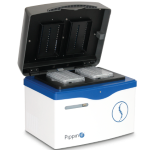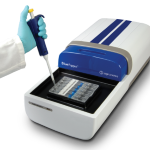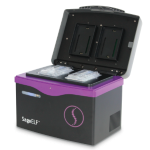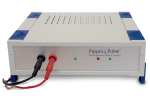It’s that time of year again — the time our kids look at us, shake their heads, and ask, “There’s a day to celebrate DNA? Seriously?”
But for those of us in the industry, DNA Day is a big deal. April 25th was chosen to honor major milestones in our understanding of DNA (Watson and Crick’s publication on the double helix structure and the completion of the Human Genome Project), and for the community it’s a great day to reflect on the remarkable advances in this field. Here, we consider a few areas where progress is particularly impressive.
Diversity of DNA: Never in history have we had such a clear view of the genetics of organisms from extremophiles to extinct species, and everything in between. Cheap sequencing allows scientists to go far beyond model organisms, exploring genomes all across the tree of life. RAD-based sequencing approaches have made it more affordable to do massive-scale genotyping of non-model organisms as well. In addition, we’re engaged in the largest-scale studies the field has ever seen, with multiple efforts aiming to recruit 1 million people in cohorts that were until recently inconceivable.
How DNA functions: At last year’s inaugural Festival of Genomics, we listened with great interest as Harvard’s Ting Wu described compelling work to understand the function of DNA based on its folding patterns. Conventional wisdom had long suggested that unwieldy DNA strands scrunch themselves up however they can, but Wu and other scientists have shown that the folding pattern is instead precisely selected, with a significant impact on the downstream functions of that DNA. Findings like this remind us that we’re still at the beginning of the story of DNA, with many more chapters to go before we can truly say we understand it. In a recent paper we really enjoyed, scientists demonstrated that they could encode, encrypt, and extract short messages inserted into synthetic DNA.
How we treat DNA: Today, we think of treating DNA as a component of the NGS pipeline, with lots of effort to improve sample prep for everything from FFPE DNA samples to museum samples or precious clinical samples. But down the road, we may literally treat our DNA, using tools like CRISPR to edit out genetic problems from living people as a standard clinical treatment.
We hope you’ll be doing something fun to celebrate DNA Day this year. Follow along on Twitter with #DNADay16 to see how the community’s making it a special event.





